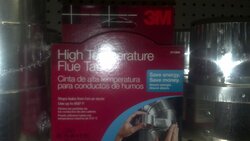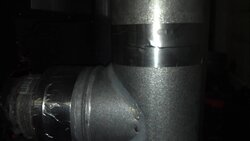I wanted to ask this just because I really wonder.....if anyone has ever done personally or seen 3" B-vent used in a pellet stove application? What is the effect of this? I know that the inside of a B-vent is aluminum, and I wonder if it must corrode very fast, that is why it is not allowed for pellet stove piping. It is funny that when I go to Home depot I always see pellet stove pipe dumped in the B-vent section, as if people switch them out for price reasons. Obviously, the interlock system is different so you can't really interchange pipe sections. But I always wonder if people would use B-vent for an detached outside workshop application. Or use B-vent caps (secure with screws). Or use B-vent to extend exterior stove piping? I use the right pipes because I am not cheap with tools/machinery-really believe me on this- I spend $$$ on certain things.
But I am used to seeing poor people do things that the best one can hope for is just not being completely unsafe. Hint: no speeches about house insurance...many people live in code-violated, uninsurable homes or mobiles that they buy with cash or private mortgage.
But I am used to seeing poor people do things that the best one can hope for is just not being completely unsafe. Hint: no speeches about house insurance...many people live in code-violated, uninsurable homes or mobiles that they buy with cash or private mortgage.




